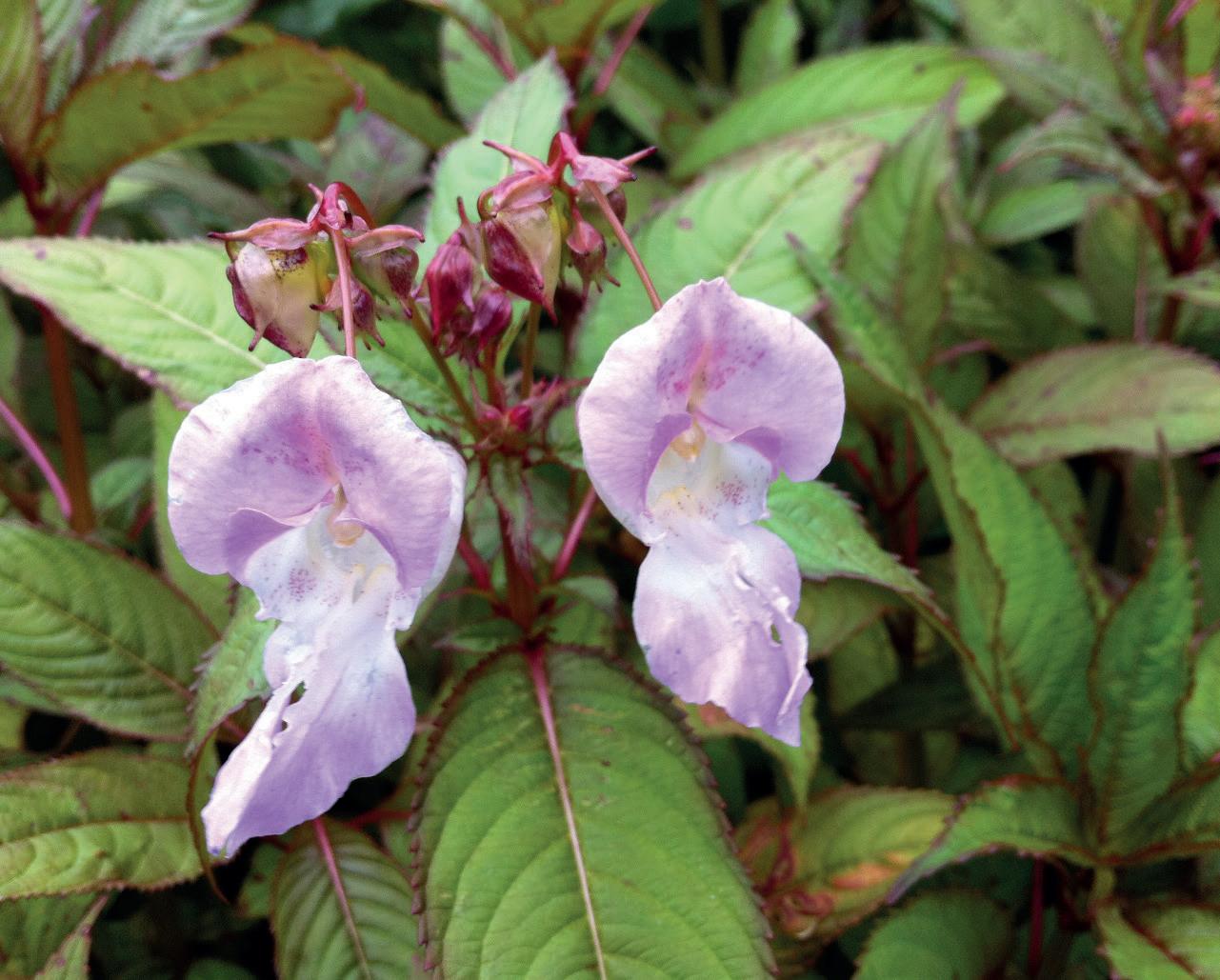
2 minute read
Himalayan Balsam
By Aidan Suart
Himalayan Balsam is an invasive plant found in Ireland, it is widespread and is commonly found along riverbanks and in damp areas, Himalayan Balsam has an annual life cycle, which means that it germinates, grows, flowers, seeds and dies in the one year, It can be identified by its pale pink/purple flowers, hollow stems that are reddish in colour, the plant can grow from 2-3 metres in height in just one year, when the plant is mature the seed pods explode spreading the seeds from the parent plant, seeds can then spread through wind and water.
Impacts: Himalayan Balsam has several impacts here in Ireland, which includes the elimination of native species through shading and reduced pollination,
a reduction in the stability of riverbanks after dieback of the plant leading to bank erosion, the plant also leads to an increased risk in flooding due to impeding waterflow in waterbodies.
Control: Unlike other invasive species found here in Ireland, Himalayan Balsam is relatively easy to control through mechanical methods. Pulling is an effective method in the control of the plant, this is due to the shallow rooting system of the plant which allows for the plant to be removed easily at the root, waste
material should then be disposed of carefully. Cutting can also be an effective method in the control of Himalayan Balsam, the plant should be cut below the node to stop regeneration using a flail or strimmer, cutting should be repeated annually.













